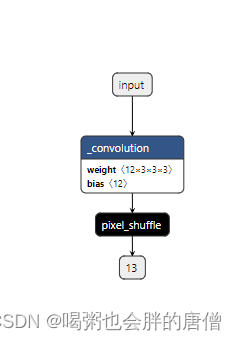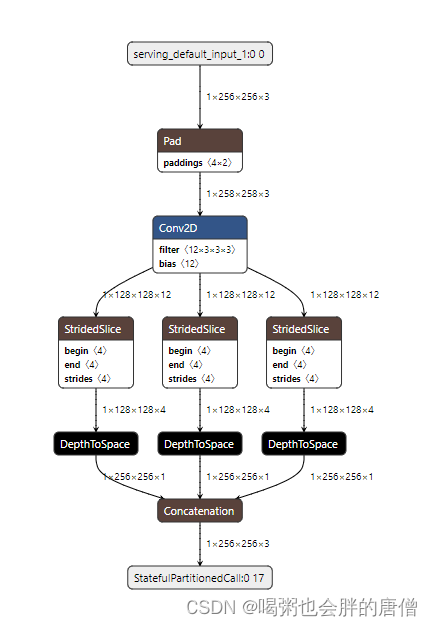torch.pixel_shuffle()是pytorch里面上采样比较常用的方法,但是和tensoflow的depth_to_space不是完全一样的,虽然看起来功能很像,但是细微是有差异的
def tf_pixelshuffle(input, upscale_factor):
temp = []
depth = upscale_factor *upscale_factor
channels = input.shape.as_list()[-1] // depth
for i in range(channels):
out_ = tf.nn.depth_to_space(input=input[:,:, :,i*depth:(i+1)*depth], block_size=upscale_factor)
temp.append(out_)
out = tf.concat(temp, axis=-1)
return out因为,有人发现在单通道的时候是depth_to_space和pixel_shuffle结果是一样的,所以拆分出来计算好在合并就行,这样速度基本上没有增加多少,亲测速度也是很快的,比从头开始实现pixel_shuffle是快非常多的。
如果使用这样的从头开始实现,转出来的tflite是没法运行在手机上面的,因为tf.transpose的维度太多了,tflite在手机上不支持6个维度的transpose的,因为超过5个维度就会产生flex层,flex层是不被支持的。
def pixel_shuffle(x, upscale_factor):
batch_size, height, width, channels = x.shape
channel_split = channels // (upscale_factor ** 2)
# Reshape the input tensor to split channels
x = tf.reshape(x, (batch_size, height, width, upscale_factor, upscale_factor, channel_split))
# Transpose and reshape to get the pixel shuffled output
x = tf.transpose(x, perm=[0, 1, 3, 2, 4, 5])
x = tf.reshape(x, (batch_size, height * upscale_factor, width * upscale_factor, channel_split))
return x下面就测试一下:
新建pytorch模型
import torch
import torch.nn as nn
class Net(nn.Module):
def __init__(self):
super().__init__()
self.conv=nn.Conv2d(in_channels=3,
out_channels=12,
kernel_size=3,
stride=2,
padding=1)
def forward(self, input):
x=self.conv(input)
out=torch.pixel_shuffle(x,2)
return out可视化出来

利用tf_pixelshuffle转出来的结果:

利用pixel_shuffle转出来的结果:
